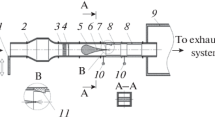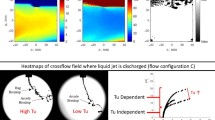Abstract.
Evaporation waves are processes that may occur under certain conditions in which a metastable or superheated liquid undergoes a sudden phase transition in a narrow and observable region, which resembles a shock wave. It is inferred from photographic documentation that in certain liquid jet flashing regimes the phenomenon is present. The evaporation wave discontinuity has been successfully modeled in a similar way as a deflagration wave in a combusting gas. One-dimensional laboratory experiments have demonstrated the existence of the (lower) Chapman-Jouguet solution for the cases where the liquid were at a high degree of metastability. Subsonic solutions were also observed for less pronounced degree of metastability (Hill 1991, Sim oes-Moreira 1994). In this paper, the fundamental theory is briefly revised and compared with some of the experimental results obtained for the cases operating at the C-J condition. Next, the paper presents the extension of the one-dimensional theory to include the oblique evaporation wave geometry. Relationships between upstream and downstream flow properties are discussed ant further consequences of these relationships are analyzed.
Similar content being viewed by others
Author information
Authors and Affiliations
Additional information
Received 12 October 1999 / Accepted 21 March 2000
Rights and permissions
About this article
Cite this article
Simões-Moreira, J. Oblique evaporation waves. Shock Waves 10, 229–234 (2000). https://doi.org/10.1007/s001930000050
Issue Date:
DOI: https://doi.org/10.1007/s001930000050




